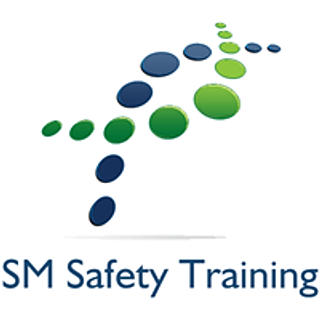Guide To Risk Management In Construction
- steven mullan
- Mar 10, 2024
- 5 min read
Written by Steve Mullan 11.03.2024

Risk management in construction is a vital component of the industry — one that’s characterised by complex challenges and high-stakes risks. In 2024,, the construction landscape will be shaped by evolving legislation and new supply chain trends, among other things.
Risk management is a cornerstone of successful construction projects. In an industry characterised by its dynamic work environments and myriad potential hazards, managing risks effectively is not just a regulatory requirement but also a necessity for safeguarding personnel, ensuring project completion, and maintaining financial stability.
What Are The 3 Primary Risks management In Construction?
Construction projects inherently involve a spectrum of risks that impact the well-being of employees and the general public. However, these risks typically fall under three primary categories.
Guide To Risk Management In Construction

These safety concerns threaten workers’ physical well-being and carry potential legal and financial repercussions for companies due to non-compliance with health and safety regulations.
2. Project Delays
Project delays are another prevalent risk in construction. Delays can stem from various sources, including unforeseen environmental conditions, supply chain disruptions or workforce shortages. The impact of these delays is multifaceted: they can escalate project costs, lead to contractual penalties, and damage the firm’s reputation.

Source: Cornerstone Projects
The specific financial impact of project delays in the UK construction industry for 2023 is challenging to quantify precisely due to various factors. However, a 2022 survey by Cornerstone Projects found that 28% of respondents said over 50% of projects experienced delays of some kind — up from just 15% in 2016.

Source: Cornerstone Projects
Perhaps even more concerning is how project delays have become more expensive. Specifically, the proportion of respondents who estimated that delays added more than 20% to the cost of construction projects rose significantly. This figure increased from 27.7% in 2016 to 47.56% in 2022, indicating a growing concern about the substantial cost implications of delays in the construction industry.
3. Financial Risks
Financial risks refer to any factor that can adversely affect a business’s financial health. In the construction sector, common examples of these risks include the following:
Cost Overruns: Exceeding the initial budget estimates for the project.
Delays: Project timelines extending beyond the scheduled completion dates.
Risks Associated with Human Resources, Materials, and Equipment: Challenges related to workforce management, material availability, and equipment reliability.
Lower-than-Expected Revenues: Earning less income from the project than originally anticipated.
Scope Creep Risk: The project undergoing changes or expanding beyond the original plan, leading to additional work and costs.
Effective financial risk management involves assessing various potential scenarios and their impacts on the company’s finances, followed by thorough planning to address these possibilities.
6 Principles of Risk Management in Construction
Risk management in construction is a process that involves the systematic identification, analysis, and management of project risks. The core principles of this process are essential for ensuring project success and safety.
Risk Identification: This is the foundational step in risk management, where potential project risks are identified. This involves a thorough examination of all aspects of the construction project, from on-site safety hazards to contractual and financial uncertainties.
Risk Analysis: Once risks are identified, the next step is to analyse their potential impact and likelihood. This analysis helps in prioritising risks based on their severity and the probability of occurrence. Tools like risk matrices can be employed for effective analysis.
Risk Response Planning: This involves developing strategies to address the identified risks. Responses could be in the form of risk avoidance, reduction, transfer (such as through insurance), or acceptance. The chosen strategy should align with the project’s objectives and resource availability.
Implementation of Risk Response: After planning, the next step is the implementation of the chosen risk response strategies. This requires effective communication and coordination among all project stakeholders.
Monitoring and Review: Risk management is an ongoing process. Regular monitoring and review of risks and their mitigation strategies are crucial. This allows for adjustments in response plans as project conditions change or new risks emerge.
Communication and Documentation: Clear communication and thorough documentation throughout the risk management process are vital. This ensures that all stakeholders are aware of the risks and the measures being taken, fostering a culture of safety and preparedness.
Construction Risk Management Guidelines
While different organisations can have different approaches to risk management in the construction industry, the following risk assessment steps, which are based on HSE guidelines, should serve as a useful starting point for just about any contractor or buyer-based entity in construction.
Related Reading: The 5 Steps to Risk Assessment Explained
Identify Hazards in the Workplace: The initial step involves identifying and locating potential hazards, which can vary significantly depending on the industry and specific site. This includes physical risks like tripping, falling, or injuries from handling heavy materials or dangerous machinery. Biological and chemical hazards, such as exposure to asbestos or infectious diseases, and psychosocial hazards, including stress or victimisation, should also be considered. Identifying hazards may involve a workplace walkthrough, reviewing accident records, or consulting product and equipment manuals.
Decide Who Might Be Harmed and How: After hazard identification, assess how these hazards can cause harm, including the types of injuries or health issues they may cause. It’s crucial to identify who is at risk, which may include all on-site workers, specific worker groups, visitors, or even passers-by. Understanding who could be affected is key to ensuring safety for all.
Evaluate the Risks and Take Action to Prevent Them: This step involves evaluating the likelihood and severity of identified risks and implementing appropriate precautions and control measures. The principle is to take action proportional to the risk level, prioritising higher-threat risks with more extensive measures. Actions could include using safer equipment, restricting access to hazardous areas, providing health and safety training, or issuing protective gear.
Record Your Findings: Documenting the risk assessment findings is crucial, especially for employers with five or more staff, as it’s a legal requirement. A written risk assessment not only serves as a record of evaluated hazards and actions taken but also helps in raising risk awareness among employees and contractors. Additionally, creating a method statement from the risk assessment can guide the implementation of risk management measures.
Review the Risk Assessment: Work environments are dynamic, with changes in personnel, equipment, and materials being common. Therefore, risk assessments should be regularly reviewed and updated to remain relevant and inclusive of all potential hazards, particularly when significant changes occur in the workplace.
Be sure to follow SM Safety training & Consultancy to keep up with the latest guidance and best practices on risk management in the construction industry. For more hands-on assistance in managing risks in your supply chain,





Comments